In The Witch's Lair: A Torch-Lit Journey Through Wookey Hole Caves
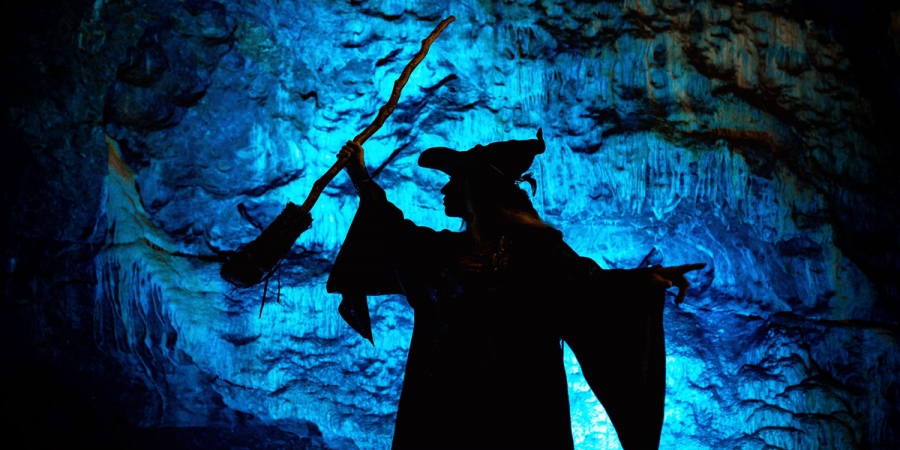

This page is more than one year old.
I was granted a rare privilege: an invitation for a private, torch-lit tour of Wookey Hole Caves. As far as my guides, Neil and Karen, were aware, this was the only tour conducted in the pitch black since the installation of lights. With Halloween on the horizon, it was the perfect time to delve deep into the cave's eerie myths and legends.
A dense fog descended on the hills as I drove through rural Somerset in the fading light of the autumn evening. As I made my way to the renowned showcaves, the moisture in the air turned to torrential rain. It painted a scene more reminiscent of a gothic novel than a popular tourist attraction.
Arriving at the attraction after hours, the usually busy sloped car park now lay empty, transformed into a fast-flowing lake. My footsteps sloshed as I waded my way to the old mill building, which now houses the gift shop, but was once one of the most important paper-making mills in Europe. This was my starting point for the unique experience that lay ahead.
The old paper mill, an integral part of Wookey Hole's rich history, stands testament to time in the valley that nestles the famous caves. Tonight, it also provided welcome shelter from the relentless rain. Here, I was greeted by Karen, with her infectious enthusiasm, and Neil, the site's historian.
"Come into our lair," Karen beckoned, alluding to their office, a space typically off-limits to guests. Behind her stood a captivating wood and glass archive cabinet, its contents whispering tales from epochs gone by. My eyes were drawn to a box labelled 'fragile skulls' placed conspicuously on the desk. "A lot of this hasn't been in the public domain since the 1970s," Karen remarked, hinting at the trove of untold stories nestled within.
Neil, with his encyclopaedic knowledge, shared tales of how locals once stumbled upon human bones near the caves. These findings, coupled with the legend of a witch residing within, only added to the cave's magical character. As he showed me a skull with peculiar marks, believed to be from trepanning, and uneven eye sockets, he shared a theory about an isolated community that might have lived above the caves. Their distinctive physical features could have made them subjects of wariness, further shrouding the caves in mystery.
Karen interjected with a theory that these early cave dwellers might have propagated the myth of a resident witch to ward off villagers. However, recent research suggests these remains might be linked to pagan sacrifices, adding a more sinister dimension to the narrative.
Karen's passion for preserving and showcasing Wookey Hole's rich history became evident, as she touched upon the Celts, Romans, and Neanderthals. From Roman pots to 2000-year-old coins, the caves have unveiled treasures that transport you back in time. Neil's revelation of a 16th-century cannonball discovery in chamber three was a real head-scratcher. How did it end up so deep within the caves?
Among the tales and artefacts, one particular item caught my attention. Karen handed me a small, tatty box, inside of which were pixie pins. These pins were smaller than I expected them to be. Delicate and thin, one was clearly made from bone and both were carefully wrapped in cotton wool. Pixie pins, often associated with old British folklore, were said to be used in various rituals and charms to ward off mischievous spirits or to bind them.

Emerging from the comfort of the mill, we braved the rain once more as we made our way through the valley towards the entrance of the Wookey Hole Caves. Karen remarked, "You're getting a personal experience. You'll get to see just how dark it is in there." To their knowledge, this is the only lights-out tour of the caves since the initial installation of lighting.
As we approached the entrance, Neil began to unravel the history of this opening to the subterranean world. "This entranceway was opened to the public in 1927," he explained. Prior to its opening, the entrance looked considerably different, with a rocky terrain and a higher floor. Neil delved deeper into the tales of its inhabitants, noting that the last of them took refuge here nearly 2,000 years ago.
Legends have long swirled around the Wookey Hole Caves, especially concerning a mysterious woman believed to be a witch. The first inkling of her existence in written records dates back to 1470. While some dismiss it as mere folklore, others argue that there's truth to the tales. The 1912 discovery by archaeologist Herbert Balch of female remains near the cave's entrance only fuelled the speculation.
The legend of the witch, whose skeleton now resides in the Wells Museum, took centre stage as Neil pointed to the exact spot where she was discovered, along with an alabaster ball, pottery, and goat remains. Among the artefacts there was also a latch lifter. "This suggests that this lady, whoever she was, had a door. With the entrance being this size, it's quite feasible," Neil added, indicating the dimensions of the entrance with the beam of his torch in the spot where it was believed to have been. Today the entrance floats near the ceiling as a result of the floor being lowered. It is marked with a small lantern.
A little deeper into the cave, the handheld torchlight revealed the various hues of the rocks – burnt oranges, deep browns, muted greys, and jet black, bearing witness to ancient fires that once flickered here. Neil explained how parts of the cave, especially the entrance, were altered for public viewing. However, much of it remains unscathed by time, including the ominously named 'Hell's Ladder' – a challenging vertical climb that was once the sole access to the show cave. The exit from Hell's Ladder leads to the next chamber and is marked by a large rock. Its edge has been smoothed over the years by countless individuals sliding off.
Curious about the cave's response to the rain outside, I inquired if the downpour had increased the dripping within. Neil responded that while sometimes the effects could be felt within 24 hours, at other times, it could take weeks for the water to seep through.
Advertisement ‐ Content Continues Below.

As the torchlight pierced through the darkness, a bat darted past us, perhaps more active due to the absence of regular visitors. Neil noted our position: "Here we're probably about 80 meters under the surface." We stepped into Chamber 1, also known as the Witch's Kitchen. The chamber's very name evokes images of ancient tales, whispered legends, and the eerie rock formation that resembled the fabled witch of Wookey Hole. Dominating the scene was the largest stalagmite in Wookey Hole, aptly named 'The Giant', standing at an impressive three meters tall and aged over 100,000 years.
We were given the rare opportunity to climb over the stone wall and descend the slippery steps leading to a beach-like area next to the fast-flowing underground River Axe. This vantage point gave us a rarely seen view of the impressive show cave, allowing us to witness it under the raw torchlight and from an entirely fresh perspective.
As we took in the rock formation, Neil dived back into a tale that has, over time, faded from the popular narrative. "In 1839, a group of Devonians wrote an account of their visit. They were guided by a girl from the Wookey Hole Inn, who pointed out the witch, her dog, and two other formations that we haven't mentioned, probably in the last 100 years at least."
Neil shone his torch on a dome-like formation with a space beneath it. He told me, "It resemble an 18th-century bread oven. So that was known as the witch's oven." He then took us to a formation which today shares its name with a famed Cornish landmark. Neil said, "that name only came around from 1927 when it when it first became a showcase, but in 1839 the visitors were told that that stalagmite coming out of the water resembled the bubbles, the foam from a boiling cauldron." Together, the oven and the bubbling cauldron better fit the narrative of the witch's kitchen.
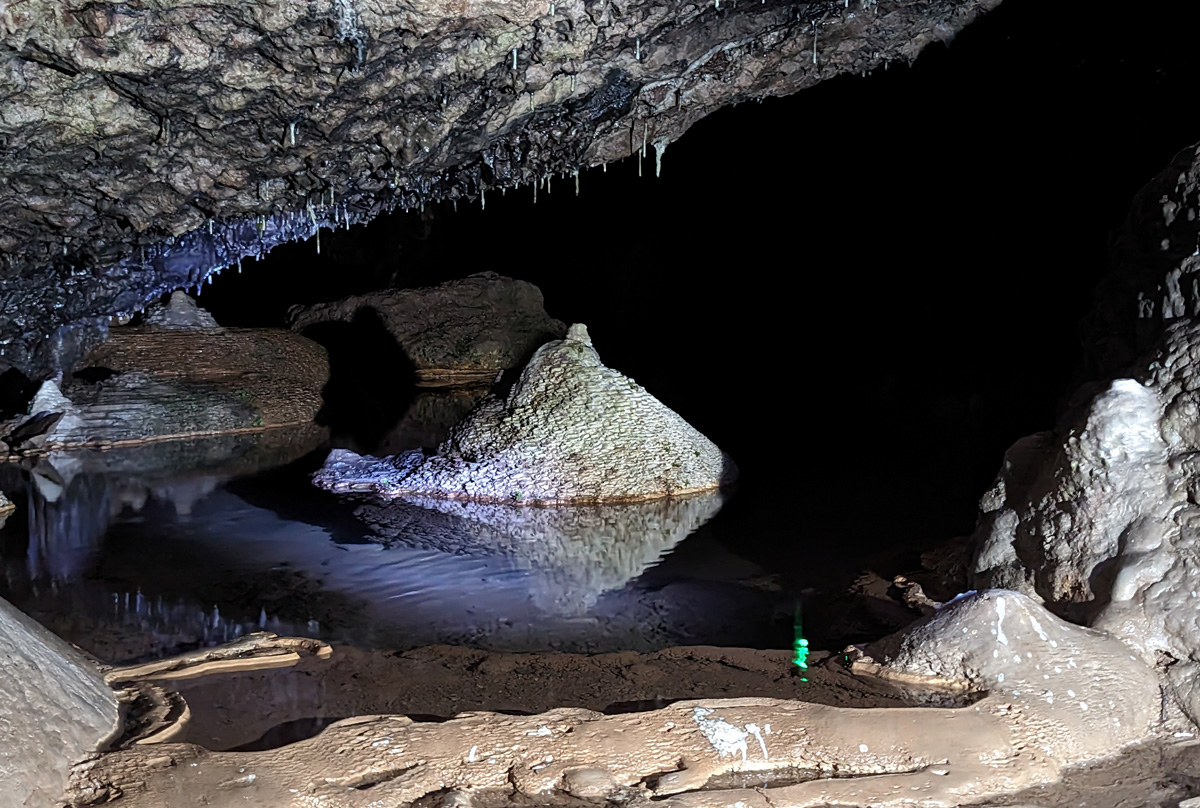
Neil continued, "There is some work going on at the moment in terms of trying to pin down a timeframe for the witch. It's been suggested that the most likely time that there was someone living in here is between about 1500 and 1520." He shared the legend of a monk from Glastonbury Abbey who supposedly sprinkled the witch with holy water, turning her into stone. This tale is restricted to a narrow timeframe, given the abbey's fate under Henry VIII post-1539.
"The caves are young in geological terms," Karen interjected, highlighting their age of around a million years. "The stream of water was so powerful and so pure, that it was perfect for milling." The mill building itself, dating from around 1860, was powered by a small canal drawn from the very river that flows through the caves.
The mysteries of the cave run deep, with Neil recounting tales of unexplained noises and curious incidents. He recounted a 1928 experience of Herbert Balch, who, along with a friend, heard an escalating noise, expecting visitors. However, the deafening noise led to no appearance, leaving them baffled and forcing them to make a quick exit.
Another tale revolves around the filming of 'Doctor Who' episode starring Tom Baker in 1974. According to Neil, the crew experienced a series of unusual incidents that many attribute to the cave's legends. Upon their arrival, with their equipment in tow, some crew members reportedly placed their coats and gear on the back of the witch's stalagmite. Almost immediately after this act of inadvertence, a distressing cry echoed through the caves. The source of the outcry was a sound engineer who, having slipped, had broken his ankle on the stairs.
But the eerie occurrences didn't end there. During filming, there was a scene where the Doctor's assistant was scripted to cross a river on a boat. Yet, when she reached the opposite bank, the boat's engine malfunctioned. Instead of slowing down, the vessel continued at speed, crashing into the beach and capsizing. Local tales quickly attributed these misfortunes to the protective spirit of the witch, believing that the crew's unintentional disrespect had invoked her wrath.
As we discussed the curse of the witch, an eerie twist intensified our already heightened sense of the supernatural. Karen's torch, our primary source of light, abruptly failed. Was it the mysterious workings of the cave? Or merely a coincidence? The weight of the cave's legends bore down on us. With just the dim glow of Neil's torch to guide us, we cautiously ventured further, into The Great Hall, otherwise known as Chamber Two.

The Great Hall, one of the highest chambers in Wookey Hole, stands impressively at roughly 23 metres high. What was noticeable straight away in the chamber's vastness was its remarkable acoustics.
Neil, drawing our attention to the history of the chamber, recounted, "While they were filming that 'Doctor Who' series, an engineer encountered a potholer. After a brief conversation, the engineer headed to the hotel." The hotel staff, upon hearing his story, inquired if the mysterious potholer was Irish. When the engineer confirmed this detail, it became chillingly apparent. There was no Irish potholer in the caves that day. This wasn't the first time the hotel staff had heard of such an encounter, fuelling the tales of another of the cave's spectral inhabitants.
Moving deeper into The Great Hall, Neil highlighted a unique geological feature, "This is known as 'the witch's chimney'." Here Neil pointed out some witch marks, he said, "The same as in houses, they put which marks around any entranceway." Witch marks, commonly found in homes from 1550 to 1750, were said to ward off witches. In this same area, many have reported feeling an unexplained cold chill and draught. As Neil said this, I felt a cold chill on my neck.
Karen commented on the acoustics, saying, "It's interesting, while we're stood in here, our voices are amplifying in a way that makes it sound like somebody else is in the cave." This would have created echoes that might have sounded like otherworldly whispers to more superstitious souls from times past.
Neil added, "The floor here has been lowered a little bit for the showcaves. So to get here in the original way, you probably would have been crawling into this space." The thought of this is understandably terrifying. Being in such a confined space, unable to run, and hearing mysterious voices — with superstitions running high — it's enough to send shivers down the spine, even of the bravest souls.
Karen wrapped up our exploration of The Great Hall with a cinematic tidbit, noting, "In the original 'Wicker Man' film, characters trying to escape a human sacrifice rush through this very chimney. That scene was filmed right here."
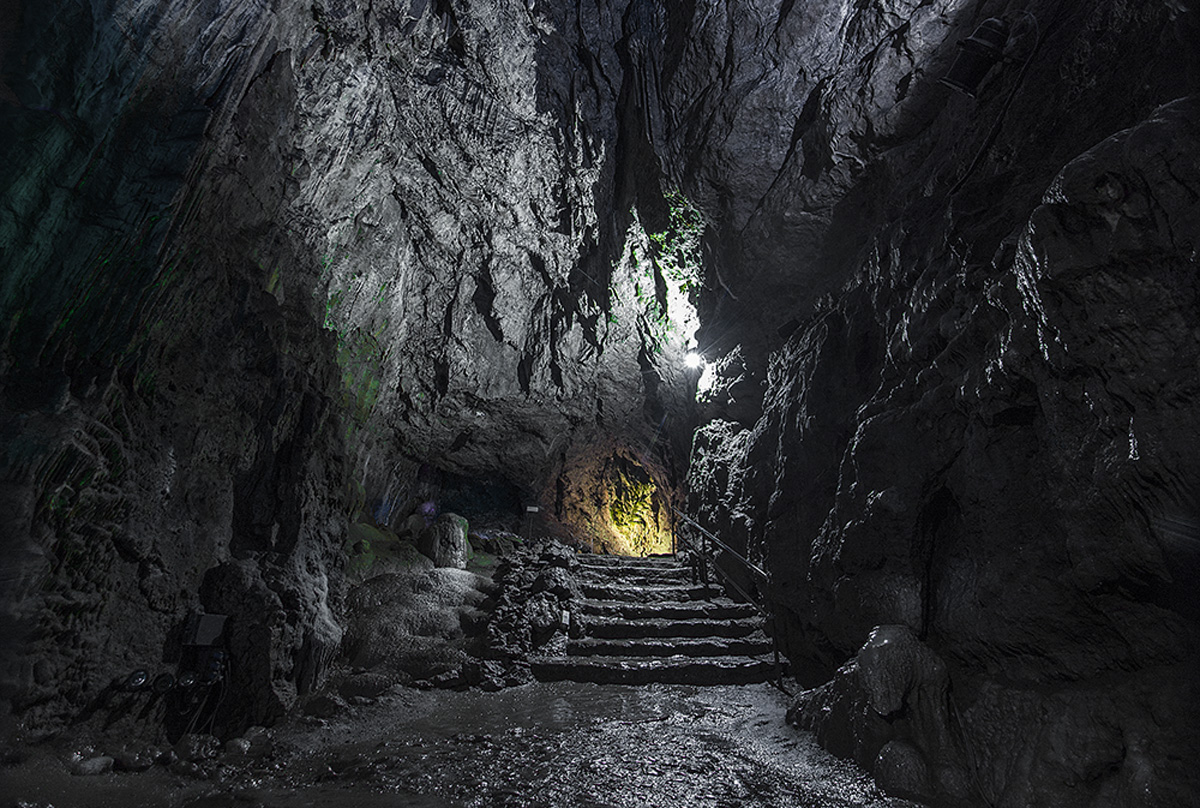
The dim beam of Neil's flashlight guided us into Chamber 3, known as the Witch's Parlour. This breathtaking, dome-shaped cave, moulded by the forces of water over millennia, held within its walls tales of mystery and discovery.
Walking into the open yet low space, Karen informed me, "This is the scene of the first recorded cave dive in the world using breathing apparatus. And it's the entranceway to the burial chamber."
Shining his torch across the lake, Neil told us, "There's the chamber, you can't see it. It's underwater, and that's only due to a dam that was from the 1850s." Directing our gaze to the waterline, Neil said, "Where my light is, that's the top of a three to four metre high archway." He added, "It's that chamber the skulls, bones and pottery were washed out of. Initially there was 28 skulls found."
According to Neil, the remains of 28 individuals, primarily males aged between three months and around 31 years, were washed out of the burial chamber, also referred to as the 'holy hole'. How and why these bodies ended up so deep in the caves is still a bit of a mystery.
To lighten the mood, Karen reminisced about the chamber's more recent history. "What we do know is that dances were held in here during the 1800s. So people would crawl in and have a good time, because we found the wine bottles."
Neil then shared another of the cave's unnerving stories. "This is also where you get another sound which has been heard many times, where you have this ever increasing, reverberating sound, It happens only in this chamber, but you can hear it all the way down through the chambers as well."

From here the tour took us past maturation tunnel of Wookey Hole's famous cave-aged cheese, as we ventured further beyond the realm of the witch and into deeper and less traversed sections of the cave. These chambers, once only accessible to the bravest souls with cave diving equipment, have now been made available to all, thanks to a tunnel constructed in 2015.
Emerging from the cave later, we were met with the soft drizzle of rain in the valley. After spending over an hour enveloped in darkness, I was surprised to find it was still light outside, but only just. However, the weather conditions outside reminded me of why people sought the refuge and shelter of the caves in ancient times.
I'd like to say a big thank you to Neil and Karen for granting me this unique opportunity. Growing up in the local area, the wonder of Wookey Hole Caves was always irresistible, particularly given my love for all things underground.
I have many fond memories of visiting the caves as a child. I'm pleased to know that passionate individuals like Neil and Karen are diligently working to unravel the rich tapestry of history intertwined with these caves. They ensure that the stories of the past, including those all-important and culturally significant ghost stories, are preserved and shared with future generations.
Further Reading
Dive into the world of the paranormal and unexplained with books by Higgypop creator and writer Steve Higgins.

Investigating The Unexplained
Practical advice on conducting paranormal investigations and uncovering the unexplained.
Buy Now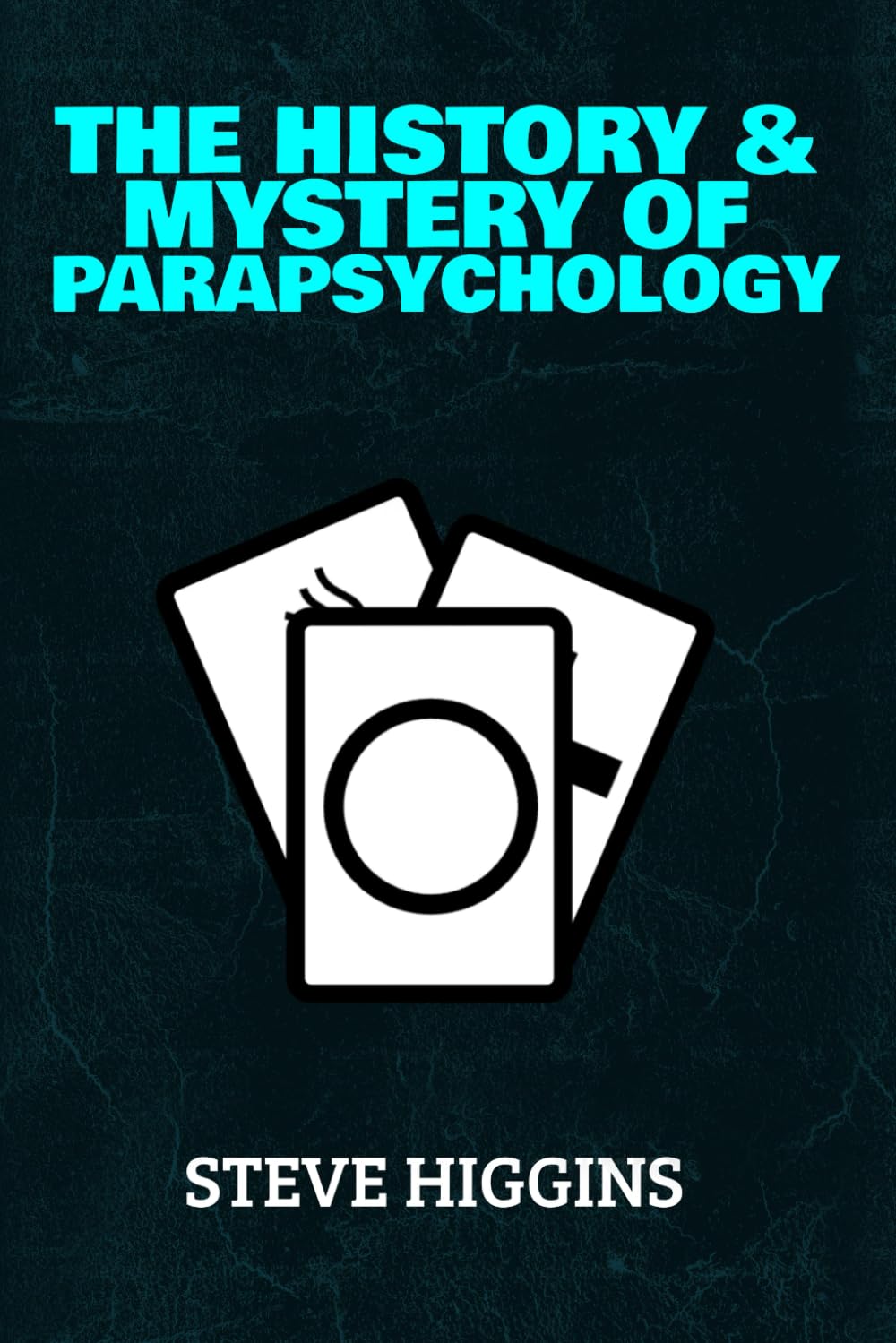
The History & Mystery Of Parapsychology
A deep dive into paranormal phenomena, exploring history, science, and psychology.
Buy NowMore Like This
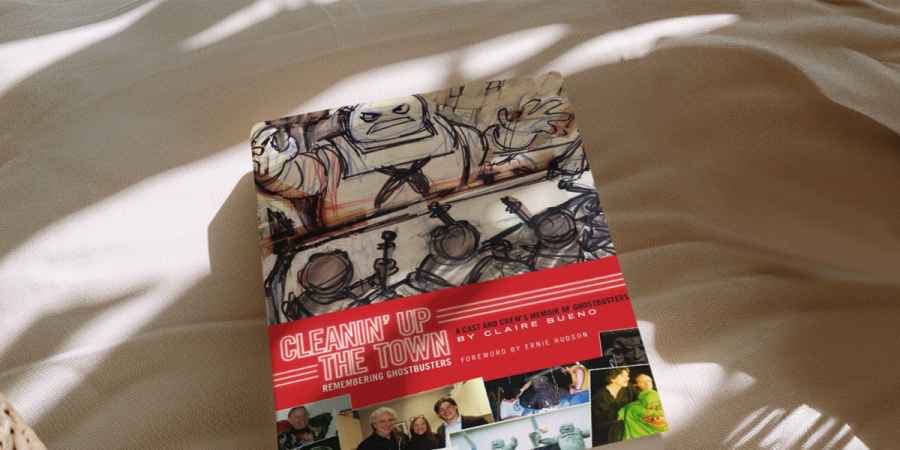
MoviesDecember 07, 2024
New Book Brings The Making Of 'Ghostbusters' To Life

UncannyNovember 08, 2024
Danny Robins Announces His Halloween 2025 ‘Fright Night’ At The Royal Albert Hall
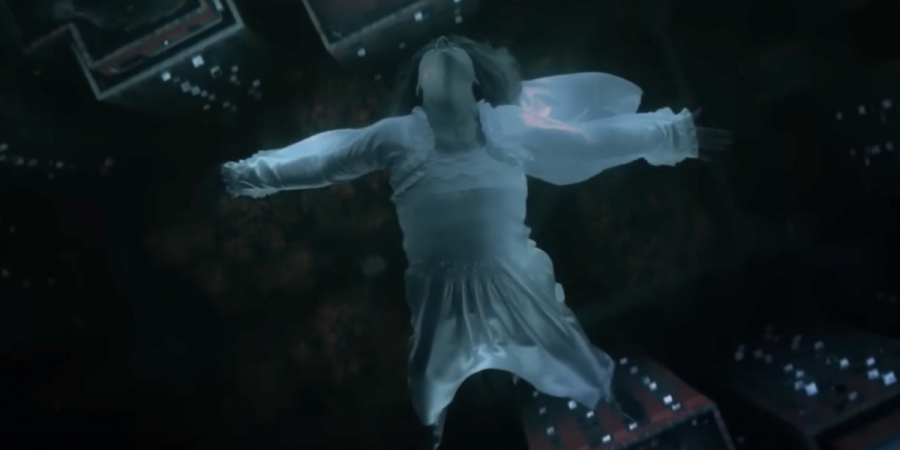
ParanormalNovember 07, 2024
Why The Subject Of 'The Manhattan Alien Abduction' Is Taking Netflix To Court
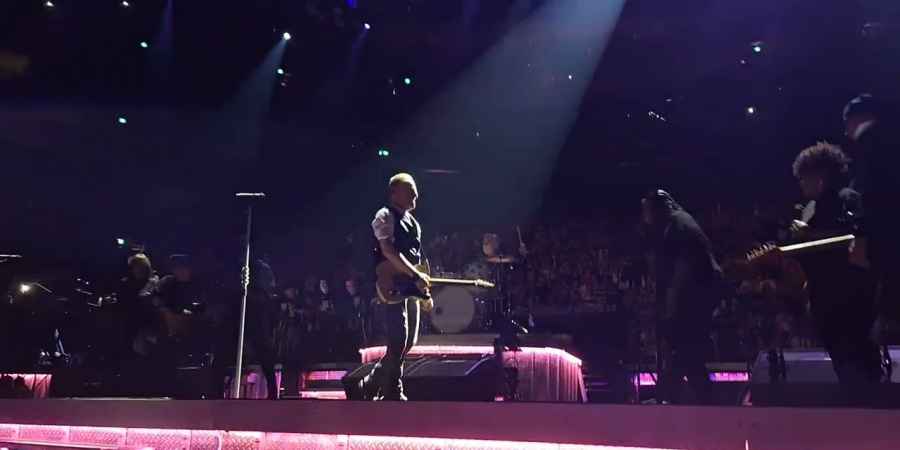
MoviesNovember 02, 2024
Watch Bruce Springsteen's Halloween Performance Of 'Ghostbusters'
 See More on Audible
See More on Audible
Comments
Want To Join The Conversation?
Sign in or create an account to leave a comment.
Sign In
Create Account
Account Settings
Be the first to comment.